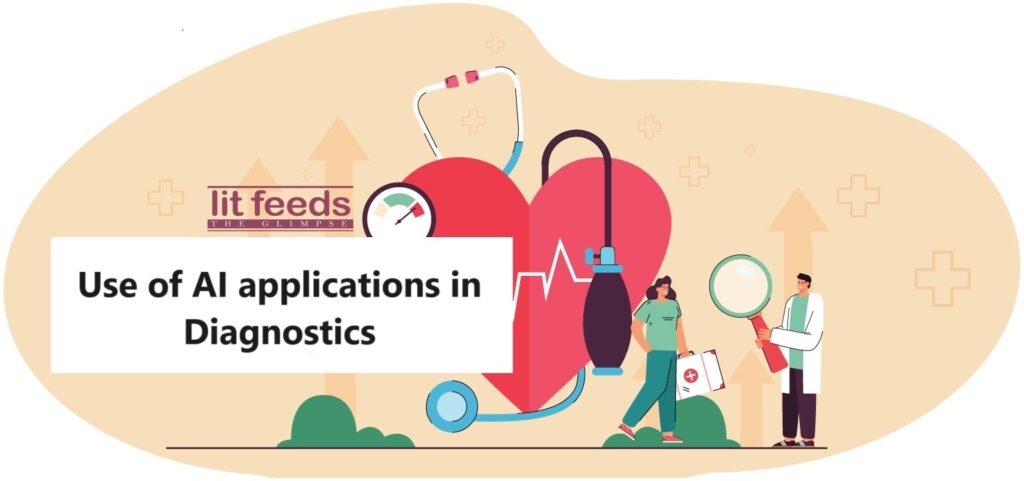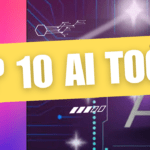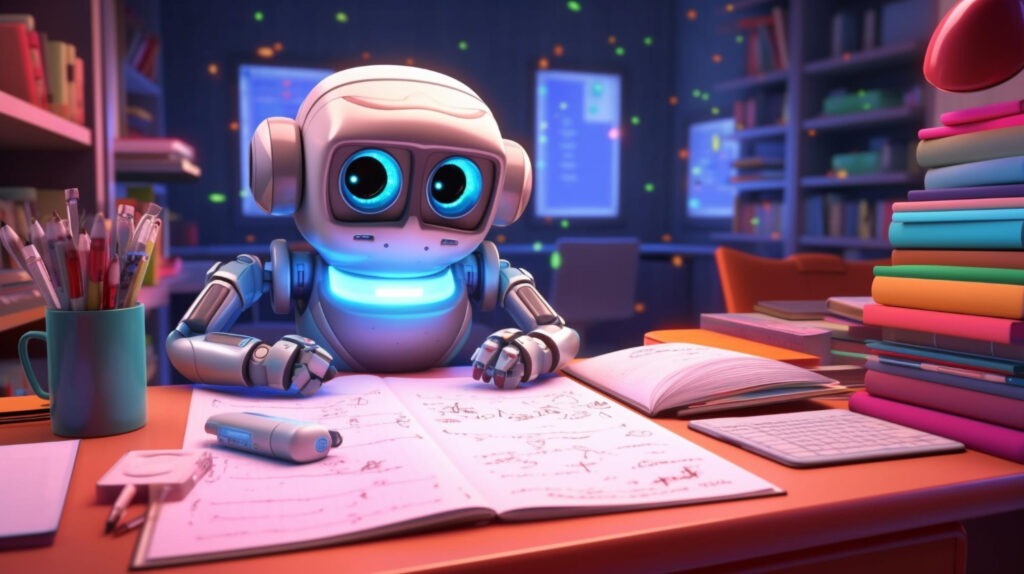AI in Diagnostics:

Accurate results are the primary aim of diagnostics; the process aims to identify the medical issue and provide a diagnosis that will allow the patient to receive effective treatment.
Diagnosis is the process of evaluating medical conditions or diseases by analyzing the symptoms, his or her medical history, and the test results.
Diagnostics Involves in:
Lots of tests, as we all know. The first thing is X-rays, MRI and CT scans, blood tests, biopsy tests, stool tests, urinary tests for children and adults, and other biopsy procedures that help the health care provider or physicians give the best course of treatment.
Medical diagnostics not only assist in the diagnosis of medical illnesses but can also be used to track the advancement of those conditions, measure the value of treatment, and detect possible medical problems before they become critical.
Medical 2D/3D imaging, bio-signals (such as ECG, EEG, EMG, and EHR), vital indicators (such as body temperature, pulse rate, respiration rate, and blood pressure), demographic data, medical history, and laboratory test results are just a few of the many patient data types that AI is capable of analyzing.
With the recent advancements in healthcare, be it equipment-wise or or use of artificial intelligence, medical diagnostics has the ability to transform by increasing the speed of diagnostic process efficiency and prediction accuracy.
Blood tests, DXA, MRI scans, and ultrasound help medical professionals diagnose and identify the unhealthy illness in a more rapid and accurate way.
Use of AI makes diagnosing the disease effortless:
Here using AI it can easily be analyzed on a fast-paced, wide range of patient data types, including medical 2D/3D imaging, like ECG, MRI, EMG, and EHR; important indicators like BP, respiratory rate, body temperature, and pulse rate; and all demographic information, medical history, and lab test results.
With Ai support the diagnosis is made easier than the earlier version of getting results, these are pretty accurate and this helps health care providers in saving the time and being more informed about patient care.
Any patient’s diagnostic journey begins when he first seeks medical health care for his or her symptoms and ends when an accurate and perfect diagnosis is given for these symptoms. That is, if one becomes sick immediately, they can go to the nearest doctor for a quick diagnosis and hopefully treatment.
AI can help health care providers in a variety of patient care and intelligent health systems.
AI techniques ranging from machine learning to deep learning are prevalent in healthcare for disease diagnosis, patent data, history, and risk identification.
Furthermore, AI primarily enhanced the infirmary experience and sped up the preparation of patients to continue their rehab at home.
Ai Evolution in diagnostics:
The world has evolved in all aspects, and it has evolved even more in the world’s health care systems, which has really made it easy to serve physicians and patients with accurate results.
From bridging the gap between research and practice to unleashing endless possibilities, the introduction of artificial intelligence has paved the way and changed the course of the process of life-saving diagnosis.
AI breakthrough in medical diagnostics, so one can fasten their seatbelts where cutting-edge technology meets compassionate health care, thanks to AI.
How AI Turned into Life-Sustaining Diagnosis:
AI turning things quickly and rapidly, the introduction of artificial intelligence (AI) has revolutionized numerous fields and opened up a world of opportunities. One such area is the diagnosis of life-saving conditions. Once AI arrived, the world began even more quickly.
The use of artificial intelligence (AI) in diagnostics is truly remarkable and unprecedented in the healthcare sector. With the use of Artificial Intelligence medical personnels may easily detect diseases at an early stage now. This actually reduces the complications for treatment. It makes it easier for the physician to analyze the condition and treat according to the test results. Ai has a history of treating a wide range of cancer, illness, neuro diseases, cardio and many more critical diseases.
AI is now used for more than just disease detection; it is also essential to personalized medicine, encompassing patient data, medical histories, and records. Here, AI protects a person’s susceptibility to a particular disease and customizes treatments accordingly.
This actually saves a great deal of time, enhances patient outcomes, and prevents needless medical expenses.
This is known as the power of technology and healthcare collaborations. From creating a bridge between theory and practice to opening up numerous opportunities.
Artificial Intelligence (AI) has already improved medical diagnostics by changing the way diseases are detected and diagnosed.
Usage of Ai devices:
We have all seen AI-powered gadgets like smartwatches and fitness trackers that track calories, help individuals stay in shape, and enhance overall health since the technology’s introduction.
AI provides additional self-diagnostic capabilities that can actually aid patients in avoiding pointless travel. They can use the instruments to check their personal conditioning with the aid of equipment. can even go virtual, allowing nursing assistants to have forceful conversations about patients’ problems with them.
To create innovative healthcare applications, numerous pharmaceutical corporations are collaborating with tech firms. 2020 saw Sanofi collaborate with the British business Babylon to help patients with digestive health issues through the use of their online symptom checker.
In an effort to help patients with medical issues, numerous pharmaceutical corporations worldwide are working in conjunction with well-known digital businesses that create innovative health care applications.
We might be far better off in terms of using AI technologies, but one thing we must remember is that nothing can replace the quality of advice you take from a doctor or local health care provider.
To Sum Up:
Point in time, everything appears to be simple to identify and effectively treat. However, as artificial intelligence (AI) develops and research pushes the envelope, we can anticipate a day in the future when prompt diagnosis will be the norm. preserving time.
Honouring the incredible accomplishments made possible by AI, let’s save more lives, save effort, and give patients hope.
















